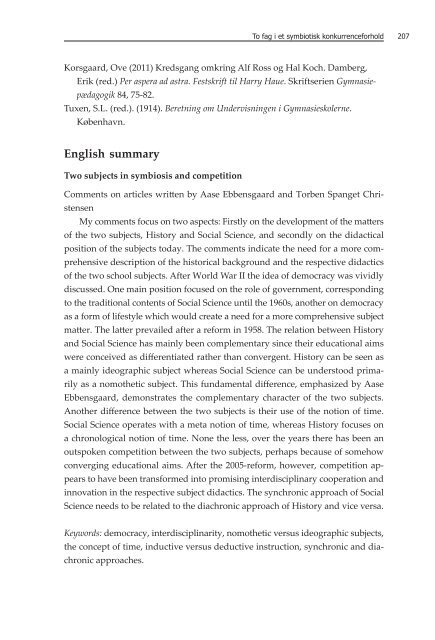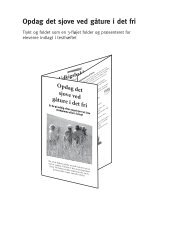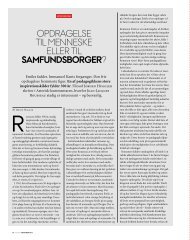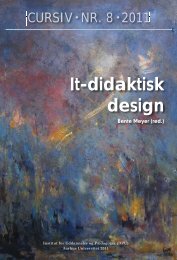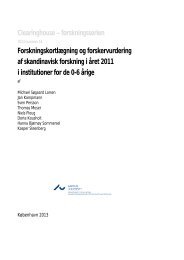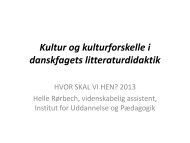Sammenlignende fagdidaktik 2 - Institut for Uddannelse og ...
Sammenlignende fagdidaktik 2 - Institut for Uddannelse og ...
Sammenlignende fagdidaktik 2 - Institut for Uddannelse og ...
Create successful ePaper yourself
Turn your PDF publications into a flip-book with our unique Google optimized e-Paper software.
Korsgaard, Ove (2011) Kredsgang omkring Alf Ross <strong>og</strong> Hal Koch. Damberg,<br />
Erik (red.) Per aspera ad astra. Festskrift til Harry Haue. Skriftserien Gymnasie-<br />
pædag<strong>og</strong>ik 84, 75-82.<br />
Tuxen, S.L. (red.). (1914). Beretning om Undervisningen i Gymnasieskolerne.<br />
København.<br />
English summary<br />
Two subjects in symbiosis and competition<br />
Comments on articles written by Aase Ebbensgaard and Torben Spanget Chri-<br />
stensen<br />
My comments focus on two aspects: Firstly on the development of the matters<br />
of the two subjects, History and Social Science, and secondly on the didactical<br />
position of the subjects today. The comments indicate the need <strong>for</strong> a more com-<br />
prehensive description of the historical background and the respective didactics<br />
of the two school subjects. After World War II the idea of democracy was vividly<br />
discussed. One main position focused on the role of government, corresponding<br />
to the traditional contents of Social Science until the 1960s, another on democracy<br />
as a <strong>for</strong>m of lifestyle which would create a need <strong>for</strong> a more comprehensive subject<br />
matter. The latter prevailed after a re<strong>for</strong>m in 1958. The relation between History<br />
and Social Science has mainly been complementary since their educational aims<br />
were conceived as differentiated rather than convergent. History can be seen as<br />
a mainly ide<strong>og</strong>raphic subject whereas Social Science can be understood prima-<br />
rily as a nomothetic subject. This fundamental difference, emphasized by Aase<br />
Ebbensgaard, demonstrates the complementary character of the two subjects.<br />
Another difference between the two subjects is their use of the notion of time.<br />
Social Science operates with a meta notion of time, whereas History focuses on<br />
a chronol<strong>og</strong>ical notion of time. None the less, over the years there has been an<br />
outspoken competition between the two subjects, perhaps because of somehow<br />
converging educational aims. After the 2005-re<strong>for</strong>m, however, competition ap-<br />
pears to have been trans<strong>for</strong>med into promising interdisciplinary cooperation and<br />
innovation in the respective subject didactics. The synchronic approach of Social<br />
Science needs to be related to the diachronic approach of History and vice versa.<br />
Keywords: democracy, interdisciplinarity, nomothetic versus ide<strong>og</strong>raphic subjects,<br />
the concept of time, inductive versus deductive instruction, synchronic and dia-<br />
chronic approaches.<br />
To fag i et symbiotisk konkurrence<strong>for</strong>hold<br />
207


